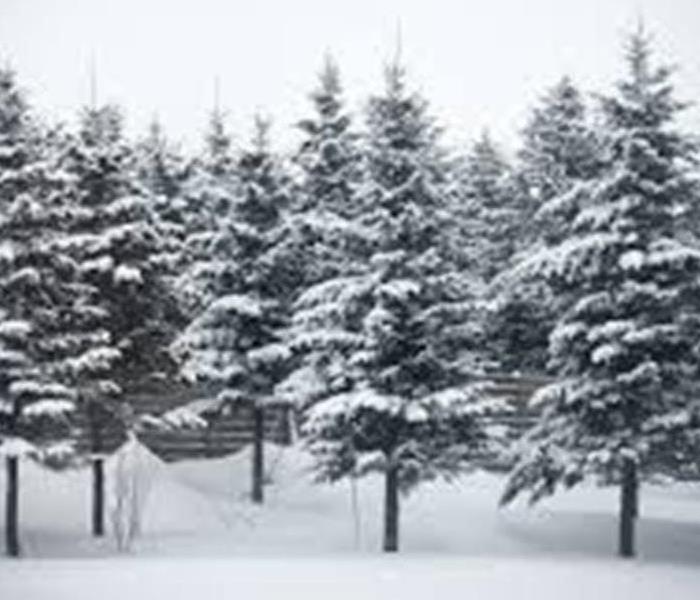Dangers of Winter Weather
11/6/2017 (Permalink)
There are a number of different ways that winter storms can impact a region and the people who live there. Winter storms are considered deceptive killers because most deaths are not directly related to the storm itself. People could get in an automobile accident on icy roads, have a heart attack while shoveling snow, or suffer frostbite or hypothermia from prolonged exposure to the cold.
Wind - Some winter storms have extremely strong winds that can create blizzard conditions with blinding, wind driven snow, drifting, and dangerous wind chills. These intense winds can bring down trees and poles, and can also cause damage to homes and other buildings.
Snow - Heavy snow accumulations can immobilize a region and paralyze a city, strand motorists, stop the flow of supplies, and disrupt emergency services. Buildings may collapse, and trees and power lines can be destroyed from heavy snow. In rural regions, homes and farms may be isolated for days, and livestock could be lost.
Ice - Heavy ice accumulations can bring down objects like trees, utility poles and lines, and communication towers. Power can be disrupted or lost for days while utility companies repair the damage. Even a small amount of ice can cause hazardous conditions for motorists and pedestrians.
Cold - Extremely cold temperatures can accompany winter storms and be left in their wake. Infants and the elderly are most susceptible to prolonged exposure to the cold, which can cause potentially life-threatening conditions such as hypothermia and frostbite. Below freezing temperatures can damage vegetation and cause pipes to freeze and burst inside homes. Exposure to cold can cause frostbite or hypothermia and become life-threatening.
What constitutes extreme cold varies in different parts of the country. In the South, near freezing temperatures are considered extreme cold. In the North, extreme cold means temperatures well below zero. Freezing temperatures can cause severe damage to citrus fruit crops and other vegetation. Pipes may freeze and burst in homes that are poorly insulated or without heat.
Wind Chill is not the actual temperature, but rather how wind and cold actually feel on exposed skin. As the wind increases, heat is carried away from the body at an accelerated rate, driving down the body temperature. Animals are also affected by wind chill; however, cars, plants and other objects are not.
Frostbite is damage to body tissue caused by extreme cold. A wind chill of -20° Fahrenheit (F) with light winds will cause frostbite in just 30 minutes. Frostbite causes a loss of feeling and a white or pale appearance in extremities, such as fingers, toes, ear lobes or the tip of the nose. If symptoms are detected, get medical help immediately! If you must wait for help, slowly re-warm affected areas.
However, if the person is also showing signs of hypothermia, warm the body core before the extremities. Hypothermia is a condition brought on when the body temperature drops to less than 95°F, and it can kill. For those who survive, there is likely to be lasting damage to the kidneys, liver and pancreas. Warning signs include uncontrollable shivering, memory loss, disorientation, incoherence, slurred speech, drowsiness and apparent exhaustion. Take the person’s temperature. If below 95°F, seek medical care immediately!
If Medical Care is Not Available, warm the person slowly, starting with the body core. Warming the arms and legs first drives cold blood toward the heart and can lead to heart failure. If necessary, use your body heat to help. Get the person into dry clothing and wrap them in a warm blanket, covering the head and neck. Do not give the person alcohol, drugs, coffee, or any hot beverage or food. Warm broth is an excellent choice.





 24/7 Emergency Service
24/7 Emergency Service